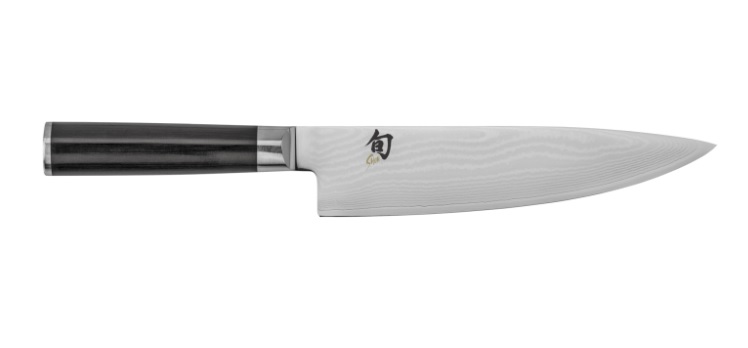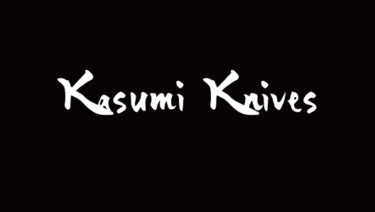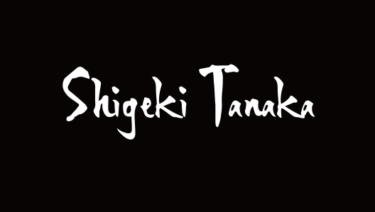While the entity that is known today as Shun Cutlery is a relatively new company, the practices and origins of Shun date further back. In 1908, Seijiro founded the company that would become KAI Corporation and eventually establish a popular brand that we all know as Shun Cutlery.
Shun recognized that the people were getting used to the heavy and bulky knives that were common in European countries and kitchens and wanted to switch things up. They wanted to introduce cutlery that did the exact same as European knives, but used lightweight technology that would make knives feel comfortable and easy to manage in everyone’s hands.
Not only are the knives made to be lighter, but they are also thin, strong, and very sharp. Shun also uses traditional Japanese techniques first popularized and usually associated with samurai blade forging, and applies that to forging cutlery and knives.
Shun is a worldwide brand with major demand for their quality knives, so they found a way to blend modern forging techniques with antiquated techniques to create the perfect amalgam of a modern day blade. While they do use modern technology, Shun does guarantee that each blade is handcrafted and that each blade takes at least 100 complex steps to perfect.
This company first started as a small business selling limited items to Japanese customers, but now this brand is known worldwide for its performance, quality, and prestige. Currently, KAI Corporation distributes its products to over 30 countries and continues to expand, pushing their products as far as they can to as many people as possible.
The company states that their goal and hope for their products is to become part of the daily lives of people throughout the world. Whether you are a knife enthusiast to an amateur chef, the name Shun is synonymous with quality craftsmanship.
Feature of Shun Knives

Simple, but Elegant and Effective
Shun knives are all handcrafted with excellence and they incorporate key design elements to make these works stand out from any other blade on the market.
Each of Shun’s blade handles use either natural materials like wood or sturdy synthetics in order to ensure the longevity and comfortability of each knife.
For almost every blade Shun uses pakkawood, tagayasan, and textured PP/TPE to craft each handle. PakkaWood is hardwood with resin that makes it strong and long-lasting, while also giving the wood a luxurious glossy finish.
Tagayasan is a darker wood and is constructed at angle to ensure comfortability while cutting and slicing. Finally, the last material Shun uses is a textured PP/TPE, or polypropylene/thermoplastic elastomer, which gives the blade a bit of a modern look and makes the knife incredibly lightweight.
For the blade, Shun uses several different metals and alloys for each blade’s individual and specific purpose; thus ensuring each blade is perfect down to the details and its usage. Shun uses Dual Core VG10/VG2, VG-MAX, VG10, AUS10A, and AUS8A. All of these metals are metal alloys with different elemental components giving you the same sharpness and durability whatever your uses may be.
However, the one to mention is the VG-MAX. VG-MAX is Shun’s very own patented alloy that is an improved and even better version of the VG10 formula. VG-MAX includes more carbon for strength and chromium for guaranteeing that the blade will not corrode easily. This alloy includes a combination of other additional elements to make it the perfect metal for knifves.
Light and Sharp Win the Race
The main selling point for Shun is that no matter the materials or knife, that each knife will be surprisingly lightweight, but as effective as any knife.
They entered the domestic and international market to show that big and bulky does not equate good quality, and that people got to be complacent with this fact and not question that you can have a lightweight and comfortable knife and have it be as effective, if not more.
Another feature of Shun Cutlery knives is that no matter the user and their experience, the knife is oriented for everyone. Whether Michelin star chef, or a parent cooking for their kids, anyone can use their knives.
All and Every
Whatever kind of knife you are looking for any occassion or purpose, Shun sells it. Shun sells both Western and Japanese knives from all types and varieties.
Currently Shun sells all of its knives in the style and design of current line ups that it has. Their current line up and knife types are Sora, Classic, Dual Core, Kanso, Premier, and Shima Steak knives.
You can find any knife in any of these beautiful styles with more styles and line-ups coming to the Shun site. Not only does Shun sell knives for cooking purposes, but also a number of blades for daily necessities.
They sell scissors, nail trimmers, cookie cutter molds, and even bobby pins. Shun cutler is a one-stop shop for all your daily needs.
History of Shun Knives
In The Beginning, There was KAI Corporation
The modern company that we know as KAI Corporation was started in the historic city of Seki, which is famous for its foreign practices and samurai swords. Almost 113 years ago, twenty-year-old Seijiro set up a shop in an infamous city that had a blade-forging tradition going back over 800 years.
Times were tough for Seijiro in the beginning, especially with the looming war and the recession that World War I had caused. However, Seijiro stubbornly kept researching and perfecting his craft and was rewarded for his hard work. KAI Corporation released a revolutionary folding knife called the “Nr.510,” and the company’s sales and reputation has been booming ever since.
In 1958, KAI Corporation was officially established in its name sake, changing various names as the company’s idea and image evolved. Later, Shun Cutlery, the company responsible for the quality knives that we know today was established in 2002.
Koji Endo
The current President and CEO is Koji Endo, who is a direct descendant of Seijiro Endo. Koji is the third generation since the company was first established.
Koji now runs the company with aims of expanding into the international market and exposing more and more people to KAI Corporation and Shun Cutlery.
Factories Worldwide
Currently KAI Corporation has many different factories in locations spanning the globe.
Their main HQ building is located in Tokyo, with another administrative building in Nagoya. While its domestic factories are in Nagoya, Seki, Yamato, and Tahara, with international factories in Shanghai, India, Vietnam, and the US.
Popular Products of Shun Knives
Classic Chef’s 8″ (Model DM0706)

This knife is a chef’s knife that totals in 8 inches in length. This knife is mainly used for slicing things like vegetables/fruits, cheese, and other not too tough substances.
The blade’s steel is made out of Shun’s trademarked VG-MAX at the blades core and an additional 34 layers of stainless Damascus steel on each side to ensure longevity and resistance to corrosion.
The handle is made out of a dark, near black Pakkawood that gives the blade an edge of sophistication. The base of the handle is a circle shape capped with a high shine metal that compliments the darkness of the PakkaWood. This knife retails currently for 170 dollars USD.
Classic Blonde Santoku 7″ (Model DM0702W)

This knife is in the santoku shape and is 7 inches. A santoku knife is similar to a chef’s knife in that it cuts things like fruits and vegetables, but it’s just slightly small and more oriented for those who are not as skilled in the kitchen.
The blade’s core is VG-MAX steel and reinforced with 34 layers of Damascus steel on each side. The handle of the blade comes in one of Shun’s signature styles, blonde.
Blonde refers to the light, almost blonde, color of the wood. The base of the blade is more of a sharp ovular shape rather than circular. This knife currently retails for about 164 dollars USD.
Higo No-Kami (Model DM5900)

This product is not the traditional kitchen knife, but rather one of their Shun’s signature pocket switchblades that they first released when starting their company.
This blade can be used as a pocket knife or a steak knife able to cut steak, fruits/vegetables, meats and cheeses. Since it is one of Shun’s classic folding knives you can fold the knife into the handle and easily store it in your pocket, so you can bring it anywhere with you.
The blade is made of VG10 steel making it sharp, tough, and resistant. The handle is made of black-brown PakkaWood. This knife retails for around 106 dollars USD.
Best Place to Buy Shun Knives
Since Shun Cutlery is an internationally established brand, no matter what country you live in you can get these knives relatively easily and do not have to pay an arm and a leg for shipping.
For customers living in Japan, you can use their kai-group website to purchase not only Shun Cutlery products, but from a myriad of other products as well.
For US based customers, you can easily shop using shun.kaiusa.com to purchase almost any Shun cutlery product. Since Shun knives are very easily accessible, you can use other second party websites like amazon.com, or whatever site you prefer, and can almost guarantee the knives will be genuine and quality.
How sharp KAI Industry’s Chef Knife(Seki Magoroku)
In this video, the man buys two knives, the petty and santoku knife, from KAI Corporation which is the parent company of Shun Cutlery.
He cuts a few different items in the video with both knives, a tomato, an onion, an apple, and finally chicken. The first being the tomato and the santoku knife just effortless glides through and cuts the tomato.
As soon as the blade made contact it was cutting through the tomato with ease, and even other knives compared to it could not cut the same and glide right through the object as the KAI Corporation knife could.
He next tries to cut through an onion. It seems there is a tiny bit of resistance with the knife when cutting the onion, but it seems it is more of a user error rather than the knife.
Even with some resistance the knife easily cuts through the tougher and thicker parts of the onion with relative ease, as well. He then uses the petty knife to skin an apple. Again while the video looks like the knife is not doing the best job at skinning the apple, the man reviewing states it is more user error and the knife can easily and readily slice right through the apple’s tough outer skin. Finally, he uses the santoku knife to cut up a slab of chicken.
With little force or effort at all the knife can cut chunks of dense chicken meat and even the tough skin. The skin in some parts does not cut as well, but when the knife’s attention is truly pointed to that part of the chicken it slices like paper.



